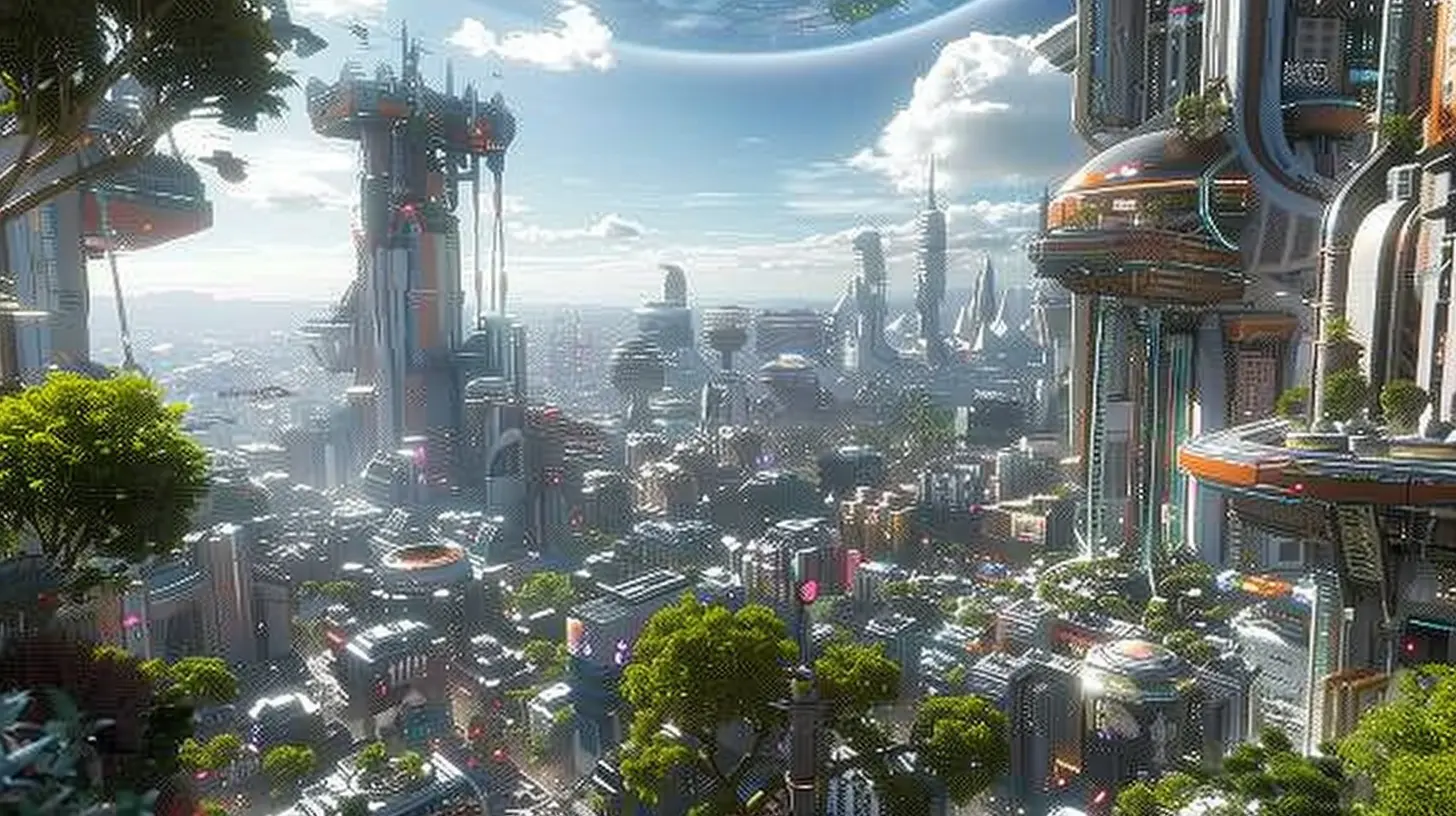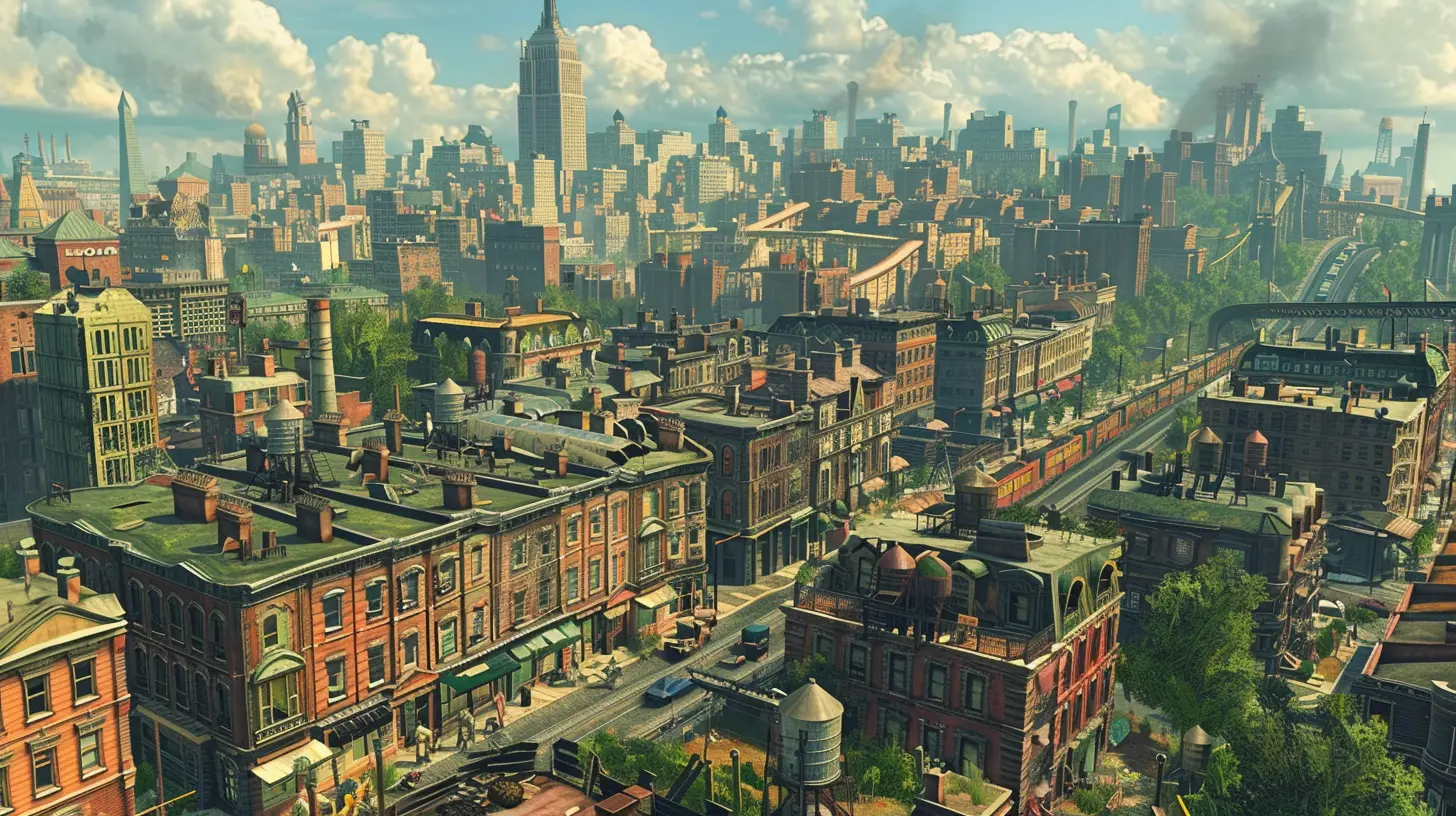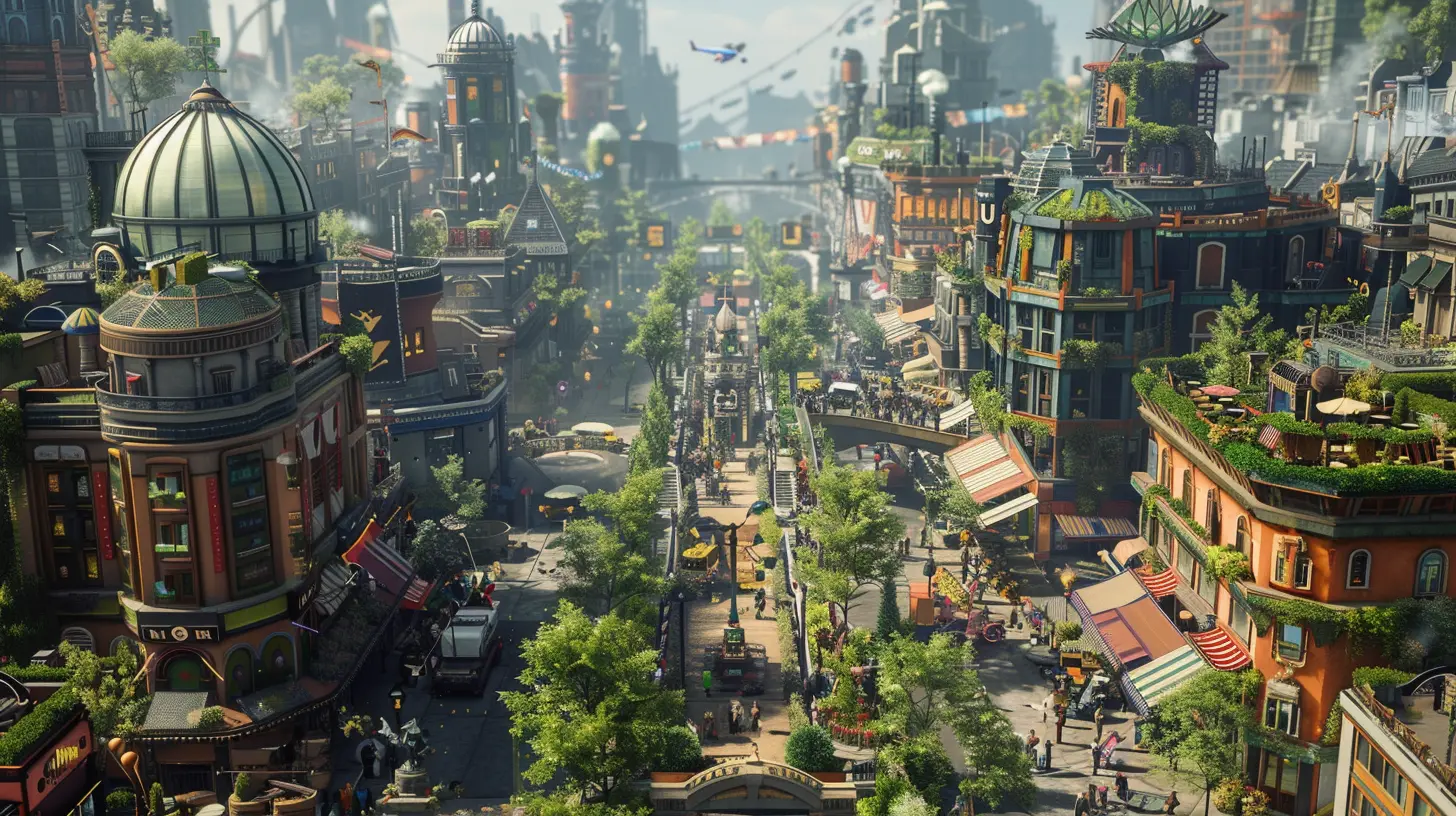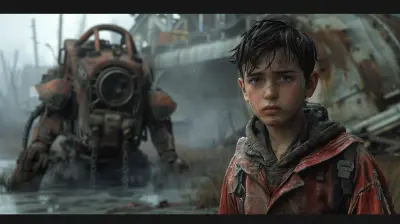Creating a Living City: How to Populate Urban Spaces in Games
27 July 2025
Have you ever wandered through a city in a video game and thought, “Wow, this place feels so… empty”? It might have the skyscrapers, plazas, and back alleys—but where’s the life? Where are the people? The noise? The hustle and bustle?
Populating an urban space in a game isn’t just about dropping a few NPCs on a sidewalk and calling it a day. It’s about creating a vibrant ecosystem that feels real, dynamic, and immersive. Players should feel like they’re walking through a breathing, living world.
In this article, we’re diving deep into how to bring digital cities to life. Grab a coffee (or an energy drink—we don’t judge), and let’s chat city-building magic.
Why City Life Matters in Games
Let’s be real—nobody likes a ghost town unless they’re supposed to be in one. When players step into a city, they expect signs of life. Think back to your favorite open-world game. Chances are, the ones that left a lasting impression were the ones where the city felt alive.A bustling urban environment doesn’t just look cool. It also:
- Enhances immersion
- Strengthens storytelling
- Supports world-building
- Encourages exploration
- Adds gameplay depth
Think of the city as a character in itself. Would you enjoy a movie with a lifeless protagonist? Probably not. Same goes for your game world.
Step One: Start With a Purpose
Before you start placing NPCs randomly, ask this: What’s the purpose of this city?Is it a trade hub crawling with merchants and travelers? A polluted cyberpunk sprawl ruled by corrupt megacorps? A sleepy coastal town trying to survive the apocalypse?
The type of city you’re building shapes the kind of life it should have. Each detail should reflect this central theme—from the background chatter to the fashion choices of its citizens.
Key Questions to Ask:
- Who lives here?- What do they do for work?
- How do they get around?
- What’s the city’s vibe—rich, poor, diverse, dangerous?
Answering these guides everything else. No one wants to see a farmer herding cows in the middle of a futuristic metropolis… unless it’s some funky dystopian satire (hey, that could actually be pretty cool).
Layering Variety: NPCs Make the City
Alright, now we’re getting to the good stuff—people! Populating your city with a diverse cast of characters is what brings it all to life.Types of NPCs You Need
To avoid a city feeling like a cardboard cutout, mix it up with:- Pedestrians – People just going about their day.
- Vendors – Selling food, wares, or shady items.
- Workers – Garbage collectors, street cleaners, traffic cops.
- Commuters – Rushing to catch their bus or train.
- Criminals – Pickpockets, graffiti artists, rebels.
- Tourists – Snapping selfies or getting lost.
- Animals – Stray cats, birds, service dogs (they count too!).
And hey, don’t forget the oddballs—the street preacher, the conspiracy theorist, the guy who thinks he’s a superhero. They add flavor.
Make NPCs Feel Real
The best NPCs are the ones that don’t feel like NPCs. They move with purpose. They have routines. They react to the world around them.Here are a few tricks to nail this:
1. Give Them Routines
Set up daily cycles. Maybe someone opens their coffee shop at 7 a.m., goes on break at noon, and closes by 6 p.m. Another might go jogging in the park every morning. When players notice patterns, the city feels more alive.2. Use Reactive Dialogue
“I’m late for work!” or “Ugh, this rain again?” may seem minor, but they tell the player that the NPC is living in the world. And if things go south—like an explosion or a police chase—they should panic, flee, or cuss appropriately.3. Vary Behavior
Some folks might stop to listen to a street performer. Others might be in a rush and walk right by. Add randomness and personality to keep it interesting.Environmental Storytelling: Let the City Speak
Sometimes, it’s not just the people—it’s what they leave behind.Ever notice how a well-designed alleyway can tell a whole story? Crumpled newspapers, graffiti tags, an abandoned teddy bear… these little details add layers without a single line of dialogue.
Consider:
- Bulletin boards with posters showing real city events
- Public transport ads tied to the game world
- Garbage that builds up in poorer districts
- Graffiti that evolves over time or tells political stories
- Mugs left on desks in office windows
It’s low-key genius—when players see this stuff, they feel the city breathing around them.
Sounds of the City: Don’t Skip Audio
Close your eyes and picture a busy city. What do you hear?Horns honking. Vendors shouting. People laughing. Street performers playing music. Audio might be invisible, but it’s absolutely essential.
Good city sound design includes:
- Ambient city noise (traffic, chatter, distant sirens)
- Dynamic volume changes as you move between zones
- NPC-specific audio (arguments, greetings, reactions)
- Unique soundscapes for different neighborhoods
Seriously, sound is like 50% of the illusion. Don’t skimp on it.
Traffic and Transit: Moving Parts
Ever walked down a game street where a car just drives in a straight line and vanishes? Ruins the vibe, right?A believable city needs traffic flow—both human and machine.
Things to Consider:
- Traffic lights that control actual vehicle behavior- Public transit systems (buses, subways, trams)
- Bicycles, scooters, pedestrians sharing crosswalks
- Taxis and ride-shares cruising for riders
Bonus points if players can interact with the transit system. That subway ride isn’t just fast travel—it’s a chance to observe daily life.
Neighborhoods: Give Each Area Identity
Just like real cities, in-game cities should have distinct districts, each with its own culture, vibe, and NPCs.Examples:
- Financial District – Fast walkers, suits, high-end cars.- University Area – Students, parties, late-night food trucks.
- Slums – Patchy electricity, vibrant street life, local markets.
- Art District – Murals, performers, eclectic fashion.
The more unique each neighborhood feels, the more players will want to explore every corner.
Events and Random Encounters
One of the best ways to make a city feel alive? Surprise the player.Think:
- A street magician doing tricks
- A car crash pulling a small crowd
- A political protest shutting down a block
- A wedding in the park with music and dancing
- A mugger getting chased by the cops
These don’t have to be huge, but they spice up the moment-to-moment experience.
Optional: Let the player get involved. Can they help? Ignore it? Make it worse? Give them choices.
Player Impact: Let the City React
Here’s the kicker—cities that feel alive should also notice the player.If the player becomes famous (or infamous), the city should respond:
- Pedestrians recognize them
- News broadcasts mention them
- Wanted posters appear
- People cheer or run away depending on your rep
Even small touches, like a shop owner giving a discount for helping their cousin, make players feel like their actions matter.
Tech-Side Talk: Smart Spawning and Optimization
Okay, real quick, let’s nerd out. Because all these people, vehicles, routines, and events? They’ll eat up performance if you’re not careful.Smart Solutions:
- Level of Detail (LOD) – Use lower-detail models for far-away objects.- Culling & Streaming – Load only what’s nearby and needed.
- Procedural Generation – For minor background NPCs, saves time and resources.
- AI Budgeting – Limit the number of active AI agents with full behavior at any one time.
Bottom line: Make your city awesome, but make sure it runs smoothly on your target platforms.
Real-World Examples Done Right
Looking for inspiration? Here are a few games that nailed it:- GTA V – From fake radio stations to chaotic pedestrians, it’s a masterclass in living cities.
- Watch Dogs: Legion – Everyone has a name, job, and routine—and you can be any of them.
- Cyberpunk 2077 (post-updates) – Neon streets pulsing with life and storytelling via environment.
These aren’t perfect, but they show what’s possible with the right approach.
Final Thoughts: Make It Feel Alive
Ultimately, creating a living city in a game comes down to this: make it feel like it would keep going even if the player never showed up.When your city is full of life, color, sound, and story, players want to stick around. They’ll return just to wander the streets, eavesdrop on conversations, or watch the sun set over the skyline. That’s when you know you’ve nailed it.
So whether you’re a solo dev building the next indie gem or part of a massive team crafting a blockbuster, don’t just build cities—breathe life into them.
And hey, remember: It’s not just concrete and steel. It’s stories. It’s people. It’s soul.
all images in this post were generated using AI tools
Category:
World BuildingAuthor:

Audrey McGhee
Discussion
rate this article
2 comments
Solstice Malone
Crafting a living city requires careful attention to detail and character. Each NPC should have a purpose, enriching the environment and enhancing player immersion in meaningful ways.
October 22, 2025 at 4:22 PM

Audrey McGhee
Thank you! Absolutely, each NPC’s purpose plays a crucial role in building a vibrant, immersive city. Thoughtful design can truly enhance the player's experience.
Owyn McVaney
Urban spaces in games can pulse with life or linger in shadows. What secrets lie beneath their bustling facades? Discover the artistry of crafting vibrant, mysterious cities that invite players to explore every hidden corner.
August 8, 2025 at 4:38 PM

Audrey McGhee
Thank you! Urban environments are indeed rich with potential, allowing players to delve into nuanced narratives and uncover hidden stories. Crafting these spaces involves balancing vibrant life with intriguing mysteries, creating immersive experiences.


